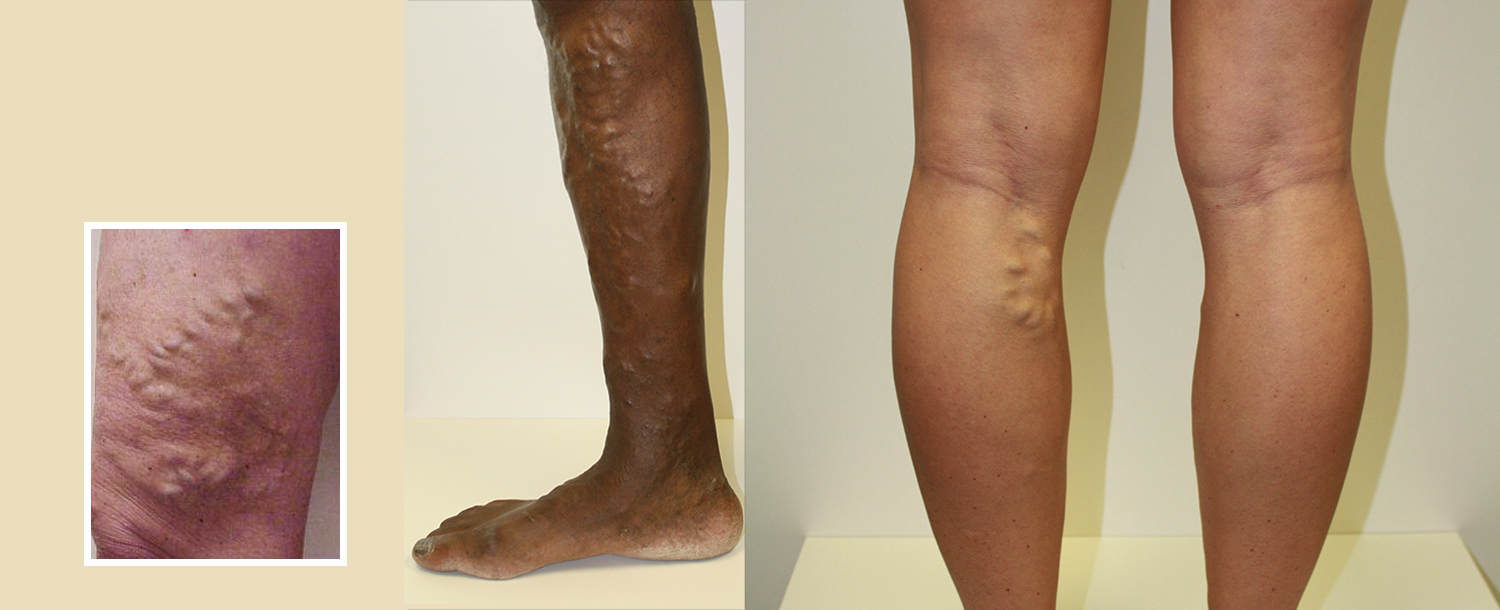
Bulging Varicose Veins
Varicose veins develops when larger veins under the skin can no longer hold or accommodate the downhill flow of blood and blood overflows into skin branches. The Varicose veins start under the skin and with time slowly bulge and become visible. Visible Varicose veins are usually a predictor that a bigger problem is occurring under the skin.
What are Varicose Veins? Varicose veins are enlarged, weakened, dilated veins that have permanently lost their ability to carry blood from the legs back up to the heart against the force of gravity. As the blood refluxes or flows downhill in the leg and pools due to gravity, the veins overfill giving them their typical unsightly bulging appearance. Varicose veins cause tired, heavy, aching, throbbing, swollen legs which are typically worse at the end of the day. Nighttime leg cramps and leg restlessness (sometimes called Restless Leg Syndrome) are also very common problems caused by Varicose veins. Treatment of the diseased veins will eliminate these symptoms. If left untreated, Varicose veins always worsen over time, and may lead to the formation of blood clots (thrombosis), inflammation of the vein (phlebitis) and inflammation of the skin (dermatitis), and finally ulceration. What are Varicose Veins and reflux?
What Causes Venous Disease / Varicose veins?
Heredity is the number one contributing factor causing Varicose veins. A genetic tendency causes veins to weaken and wear out over time. The greater this genetic tendency the sooner it will happen. So regardless of treatment, if you have a strong hereditary predisposition, you will probably form new problems as time goes on. Other contributing factors include pregnancy, obesity, hormone-containing medications, standing for long periods, and traumatic injury to the leg. In most cases, nothing can be done to prevent veins from wearing out, but if effective treatment is given early in the course of the disease, complications like phlebitis, blood clots and ulcerations may be prevented.
How are Varicose Veins Treated?
Usually bulging varicose veins are treated with a combination of procedures. Usually pressure in the varicose veins is first decreased by closing the root saphenous veins via laser ablation. or other treatments for the saphenous veins. Then the remaining abnormal varicose veins are treated via Foam sclerotherapy or removed via ambulatory phlebectomy which is a micro-extraction technique. The best treatment is based upon the extent of your specific condition and your overall health and age. The doctor will recommend a duplex ultrasound examination to assess the severity and extent of your vein disease, most of which may not be visible on the surface of the leg. Without an accurate ultrasound map of your veins we cannot determine the source of your problem or treat it effectively
